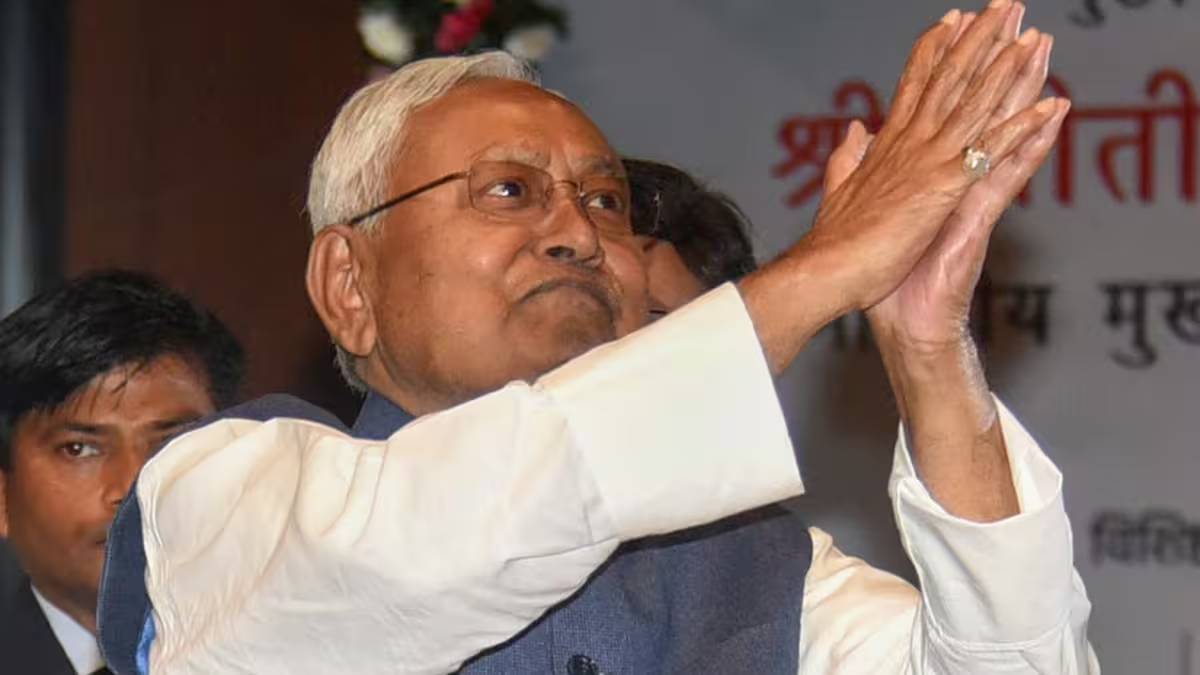‘Tiger Zinda Hai’: How Nitish Kumar is the biggest winner in Bihar elections

Few things remain consistent in life: death, taxes, and Nitish Kumar as Bihar chief minister.
With the National Democratic Alliance (NDA) led by the Janata Dal (United) on the way to a landslide victory in Bihar, much of the credit is being given to Nitish.
The 74-year-old, sometimes derided as ‘Paltu Ram’ by opponents and certain sections of the media, has ruled Bihar for two decades. He has shown himself to be the consummate politician and above all, a survivor. If things continue the way they are going, he could be sworn in as chief minister of Bihar for a record 10th time.
STORY CONTINUES BELOW THIS AD
Let’s take a look at Nitish’s long innings in Indian politics and Bihar.
Early years, dive into politics
Nitish was born in Bihar’s Bakhtiarpur on 1 March 1951. His father, Kaviraj Ram Lakhan Singh, was a freedom fighter and an ayurvedic doctor. Nitish’s mother, Parmeshwari Devi, was a homemaker.
Nitish graduated from Bihar’s College of Engineering in Patna – now known as the National Institute of Technology (NIT) – in 1972 with a degree in Electrical Engineering. The next year, in February 1973, Nitish married Manju Sinha, who was a teacher. The couple soon had a son, whom they named Nishant.
Nitish got his start in politics during Jayaprakash Narayan’s agitation, alongside Lalu Prasad Yadav. At that time, Nitish would refer to Lalu as his ‘older brother’. Nitish was arrested under the Maintenance of Internal Security Act (MISA) in 1974 and again during the Emergency imposed by Indira Gandhi in 1975.
Nitish then joined the Janata Party – a forerunner to the BJP – and ran for office in 1977. Though the Janata Party prevailed and Morarji Desai created history by becoming the first non-Congress Prime Minister of India, Nitish lost his own race.
It was not until 1985 that he first tasted electoral success. In 1989, Nitish won Lok Sabha polls and was appointed Union Agriculture Minister. In 1990, Nitish played a key role in helping Lalu become Chief Minister of Bihar. In 1991, Nitish was re-elected to the Lok Sabha.
However, the bonhomie would not last. In 1994, Nitish took on Lalu, who was firmly in control of the Janata Dal in Bihar. Nitish then left the Janata Dal in 1994 and tied up with veteran socialist leader George Fernandes to form the Samata Party. Meanwhile, Lalu in 1997 too left the Janata Dal to form the Rashtriya Janata Dal (RJD) after a series of scandals that undermined his image.
STORY CONTINUES BELOW THIS ADNitish would refer to Lalu Prasad Yadav as his ‘older brother’. PTI
In 1998, the first NDA government came to power led by the Bharatiya Janata Party (BJP) with Atal Bihari Vajpayee as Prime Minister. Nitish served in a variety of roles in the Vajpayee government, including Cabinet Minister, Railways Minister, Transport Minister and Agriculture Minister. Nitish is said to have a high opinion of both Vajpayee and L. K. Advani.
However, in August 1999,
Nitish resigned as Railways Minister in the aftermath of the Gaisal train disaster. This came months after the NDA government collapsed when the AIADMK withdrew its support. But the NDA quickly returned to power with an expanded mandate after fresh elections were called, with Vajpayee as Prime Minister.
Reign over Bihar
In 2000,
Nitish was sworn in as Bihar Chief Minister for the first time. However, the term would last just seven short days. He was forced to resign after he could not prove his majority. A few years later, the Samata Party was folded into the JD(U).
In 2003, the Samata Party merged into Janata Dal (United). In the 2004 Lok Sabha elections, Nitish won the Nalanda seat but lost Barh. Nitish’s ascent in Bihar truly began in 2005 when the BJP–JDU alliance in the NDA unseated the Lalu-led RJD. In 2010, the alliance scored an even bigger victory, with the JDU–BJP coalition juggernaut leaving the RJD with just 22 seats.
STORY CONTINUES BELOW THIS AD
However, the alliance, thought unshakeable, ended just three years later with the BJP choosing Narendra Modi as its prime ministerial candidate. Nitish walked out of the alliance, claiming that the NDA should have chosen a leader with a “clean and secular image”. He also called for a “Sangh-mukt Bharat” and vowed he would rather die than return to the BJP.
In 2015, Nitish surprised many by tying up with the RJD of his archrival Lalu and the Congress to form the Mahagathbandhan (Grand Alliance). Nitish returned as Chief Minister of Bihar again after the alliance won 178 seats. However, the tenuous alliance between Nitish and Lalu wouldn’t last. In 2017, when corruption allegations were made against Tejashwi Yadav, the son of Lalu, Nitish broke off ties and walked out of the Grand Alliance.
Prime Minister Narendra Modi (L) speaks with Nitish Kumar. AFP
Nitish, who claimed he had heeded the advice of his soul, promptly tied up with the NDA and took office the same day as chief minister, with Sushil Kumar as his deputy. An outraged Lalu could only cry that he had been betrayed.
STORY CONTINUES BELOW THIS AD
While Nitish contested the 2019 Lok Sabha polls and 2020 Assembly polls alongside the BJP as Chief Minister of Bihar, Nitish yet again dumped the NDA for the Mahagathbandhan and joined a new coalition government. Nitish was widely seen as the man who brought the Opposition INDIA bloc together. However, he was upset with the fact that the coalition did not want to name him convener, as well as their choice of Congress President Mallikarjun Kharge as a prime ministerial face.
Then, in 2024, Nitish did it again – leaving the Mahagathbandhan for the NDA and retaking his post as chief minister. It was his ninth term in the post.
The big takeaways
Nitish’s frequent changes of alliances have earned him the sobriquet ‘Paltu Ram’ – a tag his critics will no doubt say is apt. However, there can be little doubt that Nitish stepped into Bihar at a time when the ‘jungle raaj’ image loomed large over the state. Nitish’s focus on development, law and order and his clean image have also earned him another nickname – ‘Sushasan Babu’.
According to reports on Thursday, posters and banners with the words ‘Tiger abhi zinda hai’ (Tiger is still alive), with a picture of Nitish, sprang up across Bihar. Now, with the results coming in, Nitish has shown that he has shrugged off rumours of ill health and barbs from critics.
STORY CONTINUES BELOW THIS AD
Experts are impressed with Nitish’s performance.
“The 2010 election was Nitish Kumar’s zenith – JD(U) won 115 seats and BJP 91 to decimate the RJD. Repeating a similar performance speaks volumes of his acceptance levels,” analyst M. K. Choudhary told Hindustan Times.
Whether he be ‘Paltu Ram’ or simply a consummate survivor, all eyes will be on Nitish to see what he will do next.
With inputs from agencies
End of Article





